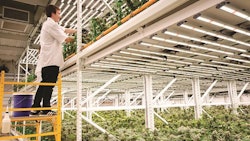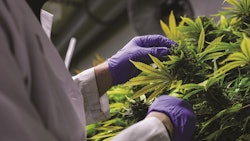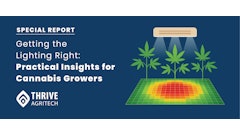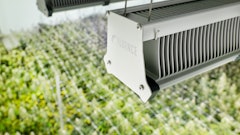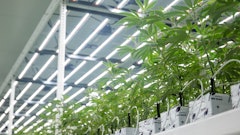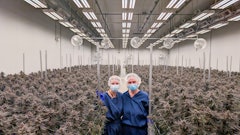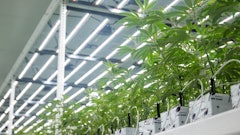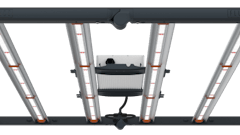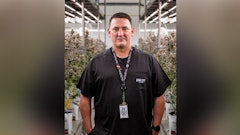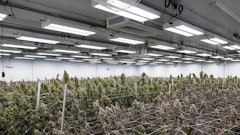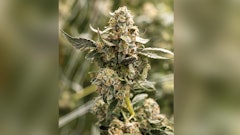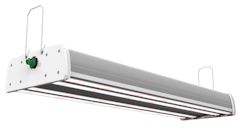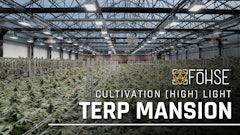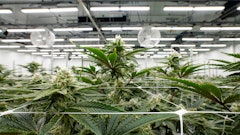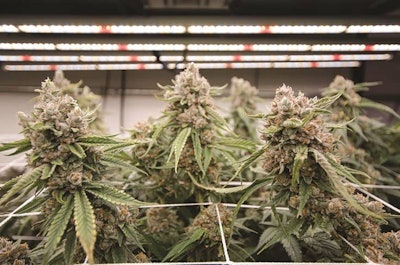
_fmt.png?auto=format%2Ccompress&fit=max&q=70&w=400)
The idea that effective lighting is vital for cannabis cultivation is hardly earth shattering, but as the industry advances, there is always more to learn, more tools available and more improvements to be made.
From the importance of lighting measurement standards to light mapping and increasing efficiencies, the best cultivators are always those who never stop learning. Here, Dr. Mark Lefsrud, an associate professor at McGill University who leads the institution’s Biomass Production Laboratory, shares best practices growers should consider when lighting their crops.
How can growers apply a lighting measurement standard to cannabis?
A lighting measurement standard is an industry specification that ensures all cultivators and other parties are using the same unit measurements for lighting systems. These standards are a universal lighting language so that the industry conducts all testing, reporting and comparing of results in the same way, Lefsrud says.
He advises cultivators who wish to follow lighting measurement standards to look to the North Central Extension and Research Activity–101, or NCERA-101, group, which outlines minimum reporting guidelines, including both what to measure and how to measure. Alternatively, the American Society of Agricultural and Biological Engineers and the DesignLights Consortium both offer useful standards for growers.
To test lighting levels, most growers will generally use both a pyrometer, which measures the total amount of energy available in a light in watts per square meter, as well as a quantum sensor, which measures photosynthetic photon flux density, which is essentially how much photosynthetically active light the plant is receiving. Neither system is perfect, but using both gives a better understanding of lighting performance.
An effective go-to sensor is a spherical underwater quantum sensor, which mitigates common issues with measurement, such as inconsistent light streams and imperfectly angled lights and sensors. However, growers can produce a clear light map by investing in any quality sensor product as long as they use it correctly.
_fmt.png?auto=format%2Ccompress&fit=max&q=70&w=400)
What is light mapping and why is it important?
Light mapping is the process of using sensors to measure light at key locations throughout a grow, Lefsrud says. As most cultivators plant in a grid structure, this usually means measuring light at every single plant location. For a more detailed picture, growers can add multiple points in between plants.
With the goal of uniformity throughout plant growth, light mapping is an essential tool to monitor what’s reaching the plant at each stage throughout its lifecycle. For example, if growers notice areas in their light map that are over-bright or too dark in their grid, they can adjust their hardware to create uniform brightness before these areas can cause inconsistent growth. “The game of the light installer is to try to make it as uniform as possible,” Lefsrud says, adding that the grower’s challenge is “to try to choose a location that’s optimal for the plant—not too bright and not too dim.”
But it’s not always as easy as taking a measurement and calling it a day. Plants are simply too dynamic, and lights are too inconsistent. Some lights may have a stronger focal point and weaker outer coverage or vice versa, meaning that certain models can overlap one another and create inconsistent areas of light. Higher-end lighting fixtures tend to be more uniform to mitigate this issue, Lefsrud says.
Meanwhile, plant growth impacts light-reading outcomes. Typically, growers will take a first reading at the ground level, another reading at the maximum height of the plant and a reading in the middle. This creates a vertical light gradient based on their growth rate.
This collection of results is a cultivator’s light map, which he or she can use to choose the optimum light locations—placing and height—to maximize uniformity across the grow room, ensure everything is ready for harvest at the same time, and reduce lighting inefficiencies.
How can growers improve efficiencies in lighting?
One of the key actions growers can take to reduce inefficiency is to control the cooling system, Lefsrud advises. In LED (light-emitting diode) systems, if the diode fails early, it is almost always because it gets too hot, he says. “The thermal junction temperature on the back of that LED is what drives its efficiency, so if it can be really, really cold, then it drives really well and can last a really, really long period of time. But if you let it drift up to 100 or 200 or more degrees Celsius, then it dies.”
Growers must also educate themselves on the latest industry knowledge. For example, it’s still commonly believed that blue light is best for vegetative growth and that red light is best for flowering. But, according to Lefsrud, “our results say that’s wrong. Blue light can be used to induce flowering but doesn’t help vegetative growth.” If cultivators work with outdated knowledge such as this, their careful efforts with the lighting spectrum can be less effective than expected.
Another question growers should consider is which lights are appropriate for their operation. LEDs are popular because they can provide efficiency increases of 40% to 50% and, in some cases, reaching up to 60%. But LEDs are not the only option. High-pressure sodium lights, for example, are still highly efficient, especially in the double-ended models, says Lefsrud. Meanwhile, single-ended models may be less efficient than double-ended lights, but they can offer wavelength capabilities not found in double-ended alternatives.
Cultivators must carefully research the current technology and decide on the most efficient product overall for their grow rooms.









